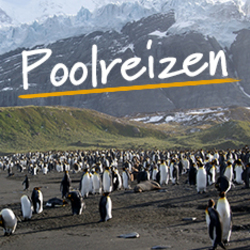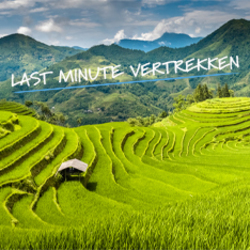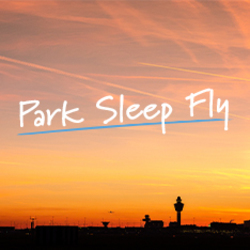Maak kans t/m 5 januari
BekijkActivities
- Wildlife Holidays
- Marine Wildlife
- Birdwatching
- New Wildlife Holidays
- — Enjoy a full week of expedition cruising in the Galapagos Islands, with two landing sites visited every day, focusing on the east and west — Immerse yourself in the diverse scenery with guided nature walks, snorkelling excursions, Zodiac rides and use of kayaks — Sail on the MV Evolution, an intimate yacht featuring the most public space and largest cabins of any yacht in its class — Discover the rugged highlands of Santa Cruz to see giant tortoises in their natural habitat — Enjoy the best guest-to-guide ratio (10:1) in the archipelago with all guides Level III certified — Learn about extraordinary local conservation efforts at the Charles Darwin Research Station
- Family
Food
Activities
-
1
Arrive Quito
Today is an arrival day into Quito. On arrival, you'll be met at the airport and transferred to your hotel. Arrival transfers are included for everyone, regardless of which flight you arrive on today. Premium accommodation: Swissotel Quito
-
2
Quito/Baltra/Daphne Major
Fly 600mi (965km) across the shimmering Pacific Ocean to Baltra Airport on the Galapagos Islands. After you pass the Galapagos National Park inspection, your guide will greet you and accompany your onward journey by bus and Zodiac to board the MV Evolution. The crew will welcome you on board and help you settle into your cabin and familiarise yourself with the boat. MV Evolution is a beautiful, intimate yacht, carrying only 32 passengers at a time. Because of its size, you can enjoy a more personal experience with nature and the wildlife of the Galapagos Islands. There will be a safety briefing and chance to get to know your fellow travellers and guides. Begin this exciting voyage with a circumnavigation of Daphne Major, a paradise for sea birds including the magnificent frigatebird. As the sun sets over the Pacific, enjoy a welcome toast with your fellow voyagers and inhale the ocean views. Premium accommodation: MV Evolution
-
3
Isabela Island/Fernandina Island
Punta Vicente Roca is at the northern edge of Isabela Island and a well-known snorkelling spot. Our landing site this morning is near an ancient volcano, which has formed two stunning turquoise coves with a protected bay. Board the Zodiac and enjoy a dramatic ride into the heart of this partially sunken volcano. Experience one of the great wildlife adventures as you take to the water and swim and snorkel among sea turtles, penguins and possibly sea horses. Today we explore the magnificent lava fields of Punta Espinosa on Fernandina. This is the youngest and most volcanically active island in the archipelago and also home to one of the biggest marine iguana colonies in the Galapagos. Look out for flightless cormorants and the extraordinary marine iguanas. The open-air decks on the Evolution are perfect for wildlife spotting, and as we cross the Bolivar Channel we may witness these immense creatures gliding through the ocean. Premium accommodation: MV Evolution
-
4
Isabela Island
Isabela is home to diverse wildlife and several volcanoes – Cerro Azul, Sierra Negra, Darwin, Wolf and Alcedo – all of which are considered active. Hike along the uplifted section of sea floor in Urbina Bay at the base of Alcedo and marvel at the boulder-sized dried coral heads. Our expert naturalist guide will explain how this landscape formed, among a backdrop of giant tortoises, colourful land iguanas and other wildlife that feed on the vegetation. Jump on the Zodiac for a thrilling excursion to Tagus Cove, where we look for penguins, flightless cormorants and pelicans along the cliffs before snorkelling in the turquoise waters. Premium accommodation: MV Evolution
-
5
Bartolomé/Santiago Island: Sullivan Bay
Experience nature's finest handiwork at Bartolomé Island, where we hike to the top of a dormant volcano. From here, admire the dramatic panorama of Pinnacle Rock – probably the most iconic landscape in the Galapagos. The island is dotted with craters, cinder cones, lava flows, spatter cones and broken lava tunnels which run down from the summit, creating a unique lunar landscape. Bartolomé is home to sea lions, penguins and turtles, plus a kaleidoscope of tropical fish, sea anemones, urchins and sea stars. The hike is not too strenuous and follows a set of steps to the summit; however, Zodiac drivers will take any non-hikers on a journey around the cliffs to observe the volcanic landscape. Swim and snorkel with sea lions and maybe penguins. This afternoon, hike across the unusual, swirly panoehoe lava of Sullivan Bay and see the flora colonising the landscapes. As we stroll along the coralline beach, we may spot American oystercatchers characterised by their black-and-white plumes and orange beaks. Premium accommodation: MV Evolution
-
6
Santa Cruz Island: Bachas Beach/Rabida Island
Towards the northern end of Santa Cruz Island is the exotic Bachas Beach, a sandy white-coral stretch that is a major egg-laying site for sea turtles. It is also home to one of the last remnants from the US military’s presence in the Galapagos during the Second World War. Discover this floating pier, where Sally Lightfoot crabs, black-necked stilts and whimbrels often congregate, on our morning walk before snorkelling in the azure waters where sea turtles nest. Explore the red-sand beach of Rabida Island at the geologic centre of the archipelago, where doves, yellow warblers, mockingbirds and up to nine species of Darwin’s finches live. A small saltwater lagoon is also home to white-cheeked pintail ducks and black-necked stilts. Rabida is a great place for snorkelling and getting up close to sea lions, sea turtles and reef fish such as damsels and pufferfish. Embark on a guided kayaking excursion and watch out for brown pelicans and blue-footed boobies while savouring views of the sloping volcanic peak. Premium accommodation: MV Evolution
-
7
Santa Cruz Island
Today we visit Puerto Ayora on Santa Cruz Island, a small, picturesque port town with restaurants, hotels, souvenir shops and other facilities. This coastal town is also home to the Charles Darwin Research Station. After breakfast on board the Evolution, learn about the giant tortoise and the vital work being done at the breeding centre. Since 1970, more than 2,000 tortoises have been hatched, raised and released from the Fausto Llerena Tortoise Breeding Center at the Charles Darwin Research Station, which was founded in 1959 and was once home to Lonesome George, the last-known Pinta Island tortoise. Later, visit the Wild Tortoise Reserve in the forested highlands of Santa Cruz to see and photograph these wonderful creatures in a natural setting. Before returning to the Evolution, enjoy free time in Puerto Ayora to discover more of the town. Premium accommodation: MV Evolution
-
8
Española Island
The relative isolation of Española has resulted in an abundance of unusual wildlife and species and subspecies that are endemic to the island, including the Española (hood) mockingbird, Española (hood) racer snake, Española (hood) lava lizard, waved albatross and brightly coloured marine iguanas. Enjoy a captivating Zodiac ride before wading ashore to Punta Suarez through a sea lion colony. Walk along the cliffs looking for waved albatrosses, Galapagos hawks, hood mockingbirds and the red-coloured race of marine iguana en route to a blowhole, where waves spout 90ft (27m) into the air. After lunch on the Evolution, swim, snorkel and kayak in the glistening waters off Gardner Bay, a long white sandy beach where sea lions laze in the sun, and schools of tropical fish swim. Owing to the sheer quantity of wildlife and variety of species on the island, Española will no doubt be one of the highlights of your Galapagos adventure. Premium accommodation: MV Evolution
-
9
San Cristóbal Island/Quito
Discover the fascinating natural history and learn about the settlements at the Interpretation Centre in San Cristóbal, which was opened by the park in 1998, before your Galapagos adventure comes to an end. From San Cristóbal fly to Quito, where it's possible to connect with international flights later this evening. If organising your own flights, we recommend speaking to your sales representative about post-tour accommodation in Quito so you can fly home the following day and avoid any tight connections.





























